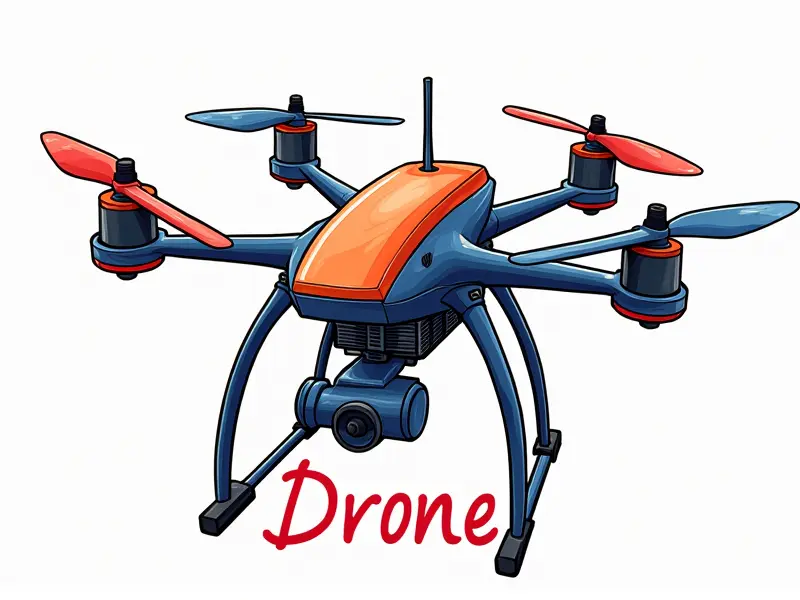How to care for Li-ion batteries?

How to Care for Li-Ion Batteries: Maximizing Flight Time and Lifespan
Lithium-ion (Li-Ion) batteries are the backbone of modern technology, powering everything from smartphones to drones. Proper care is essential to ensure these batteries deliver optimal performance and longevity. This article delves into best practices for charging, storage, temperature management, and maintenance to keep your Li-Ion batteries in top condition.
Maximizing Flight Time with Li-Ion Care
To maximize flight time with Li-Ion batteries, start by ensuring the battery is fully charged before each use. A well-maintained battery will provide consistent power output and prevent premature voltage drops that can cut short your flying sessions.
Charging Best Practices for Li-Ion Batteries
- Use Quality Chargers: Invest in reputable chargers designed specifically for Li-Ion batteries to avoid overcharging or undercharging, which can damage the battery cells.
- Avoid Fast Charging: While convenient, fast charging can generate heat and stress the battery. Opt for a slower charge cycle if possible.
- Charge at Room Temperature: Extreme temperatures can affect the efficiency of the charging process and shorten battery life. Charge batteries in environments where the temperature is between 15°C to 25°C (60°F - 77°F).
Proper Storage for Li-Ion Drone Batteries
When storing your Li-Ion drone batteries, it's crucial to maintain optimal conditions. Store the batteries in a cool, dry place away from direct sunlight and heat sources.
- Store at 40% Charge: Keeping the battery at around 40% charge level during storage helps preserve its capacity over time.
- Avoid High Humidity: Moisture can corrode terminals and cause electrical shorts. Use desiccants or silica gel packets to absorb moisture if necessary.
Avoiding Common Li-Ion Battery Mistakes
Misusing your Li-Ion batteries can lead to reduced performance, swelling, and even safety hazards. Here are some common mistakes to avoid:
- Overcharging: Overcharging can cause the battery to overheat and degrade prematurely.
- Dropping or Damaging Batteries: Physical damage can compromise internal components, leading to poor performance and potential safety risks.
- Misusing Battery Connectors: Ensure connectors are clean and free from debris. Corroded terminals can lead to poor conductivity and battery failure.
Optimal Temperature for Li-Ion Battery Use
The performance of Li-Ion batteries is highly sensitive to temperature changes. Operating your drone or device in environments with extreme temperatures can reduce efficiency and lifespan:
- Avoid Cold Temperatures: Cold weather can decrease battery capacity temporarily, leading to shorter flight times.
- Avoid Heat Exposure: High heat can accelerate the chemical reactions inside the battery, causing it to degrade faster. Keep batteries out of direct sunlight and away from heat sources during use.
Balancing Cycles to Prolong Li-Ion Life
To prolong the life of your Li-Ion batteries, follow these guidelines:
- Limit Deep Discharges: Avoid discharging the battery below 20% charge level. This can lead to permanent capacity loss.
- Use Battery Management Systems (BMS): BMS helps monitor and regulate voltage levels across individual cells, ensuring a balanced discharge cycle.
- Regularly Check for Swelling: Regular inspection of batteries can help identify swelling early. Swollen batteries should be replaced immediately to prevent potential hazards.
Tips for Maintaining RC Li-Ion Batteries
Maintaining your remote control (RC) Li-Ion batteries involves several key practices:
- Keep Clean Terminals: Regularly clean battery terminals to prevent corrosion and ensure good electrical contact.
- Store Properly Between Uses: Store the battery in a cool, dry place when not in use. Avoid leaving it fully charged for extended periods.
- Monitor Battery Health: Use diagnostic tools to monitor voltage levels and capacity over time. This can help identify potential issues before they become serious problems.
Preventing Swelling in Li-Ion Drone Batteries
Battery swelling is a common issue that can occur due to improper handling or extreme conditions:
- Avoid Overcharging: Overcharging can cause excessive heat generation, leading to internal pressure buildup and swelling.
- Maintain Optimal Temperature: Keep batteries at room temperature during charging and usage. Extreme cold or hot temperatures can exacerbate swelling issues.
- Use High-Quality Batteries: Invest in reputable brands that use high-quality materials to reduce the likelihood of swelling.
Maximizing Battery Lifespan in RC Models
To maximize the lifespan of your Li-Ion batteries for remote control models, follow these steps:
- Avoid Deep Discharges: Limit discharging to no less than 20% capacity. This helps preserve battery health and prevents permanent damage.
- Store Batteries at Half-Charge: Storing batteries at around 40-50% charge level can help maintain their overall performance over time.
- Avoid Frequent Charging Cycles: Minimize the number of charging cycles by using fully charged batteries for extended periods before recharging.
Best Practices for Storing Li-Ion Packs
Proper storage is critical to maintaining battery health and performance:
- Avoid High Humidity: Store batteries in a dry environment, free from moisture or condensation.
- Maintain Cool Temperatures: Keep batteries at room temperature (15°C - 25°C) to prevent thermal stress and degradation.
- Use Battery Cases: Store batteries in protective cases to shield them from physical damage during transportation or storage.
Common Mistakes with Li-Ion Battery Care
Avoid these common mistakes that can shorten the lifespan of your Li-Ion batteries:
- Neglecting Regular Inspection: Regularly inspect batteries for signs of swelling, corrosion, or damage.
- Misusing Battery Connectors: Ensure connectors are clean and free from debris. Corroded terminals can lead to poor conductivity and battery failure.
- Avoiding Proper Charging Methods: Use recommended charging methods and devices for your specific battery type to prevent overcharging or undercharging issues.
By following these guidelines, you can ensure the longevity and optimal performance of your Li-Ion batteries. Regular maintenance and proper handling are key factors in extending their lifespan and maintaining peak efficiency.
Conclusion
Maintaining the health and performance of your Li-Ion batteries is crucial for reliable operation of your devices or RC models. By adhering to best practices such as avoiding extreme temperatures, limiting deep discharges, and storing batteries properly between uses, you can significantly extend their lifespan and ensure optimal performance.

